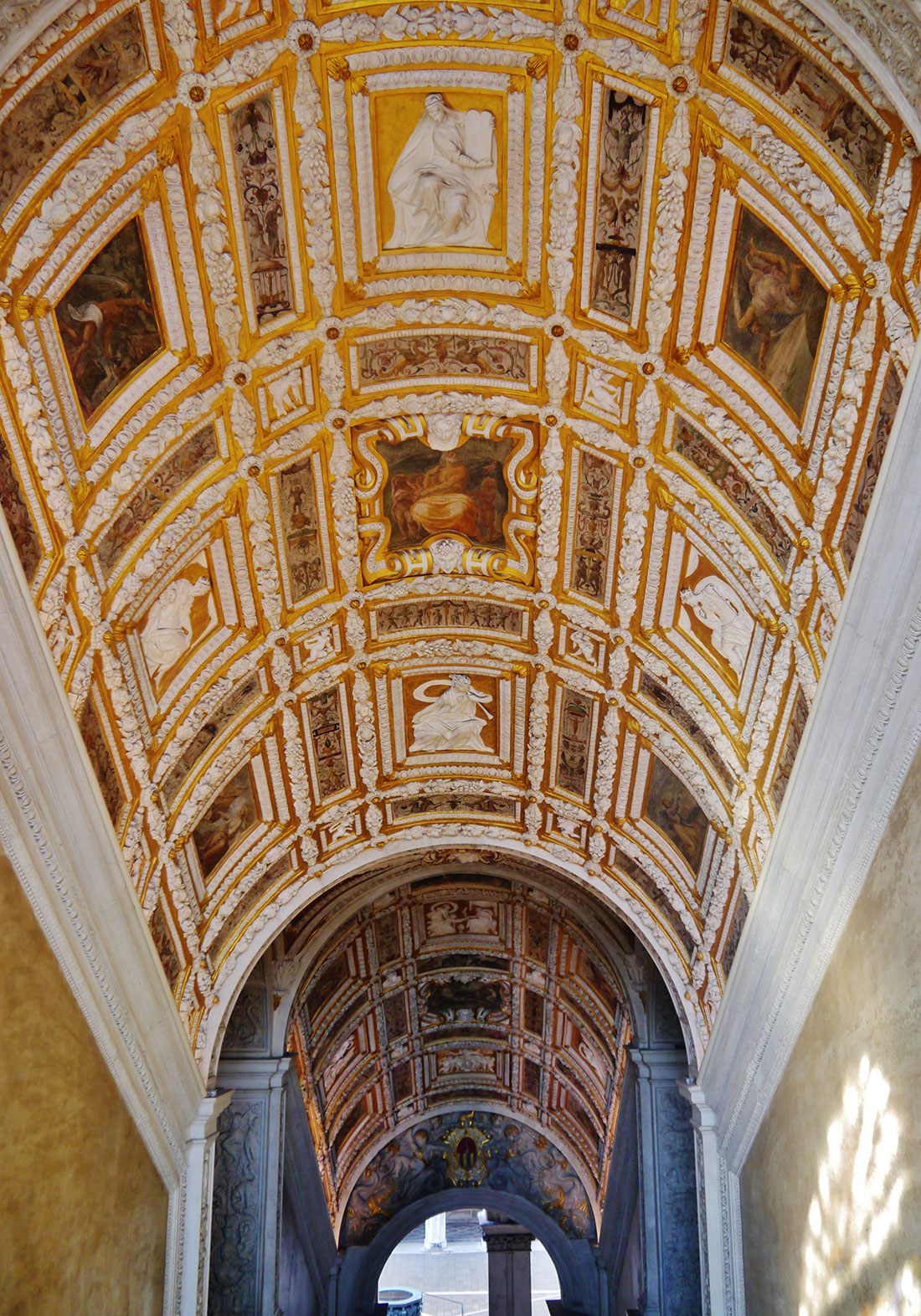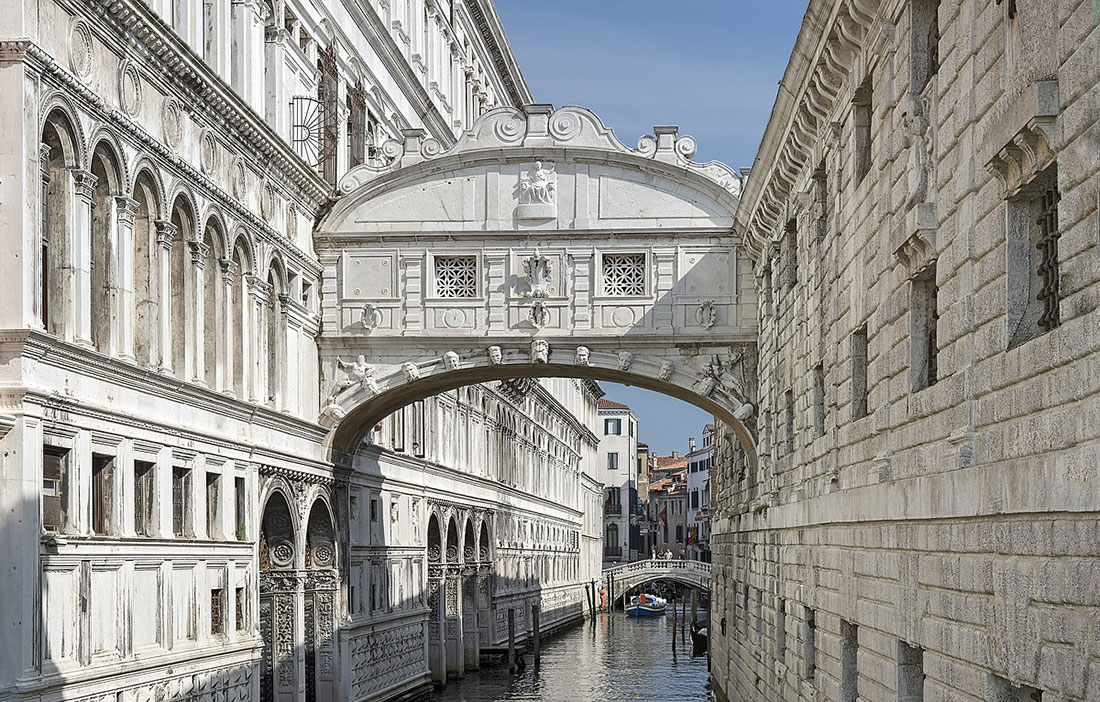The Doge’s Palace (Palazzo Ducale) in Venice is the official residence of the rulers of the former Venetian Republic. This imposing and ornate building was the meeting place for the governing councils and ministries of the republic. In successive reconstructions, the palace absorbed the features of Gothic, Moorish and Renaissance architecture.
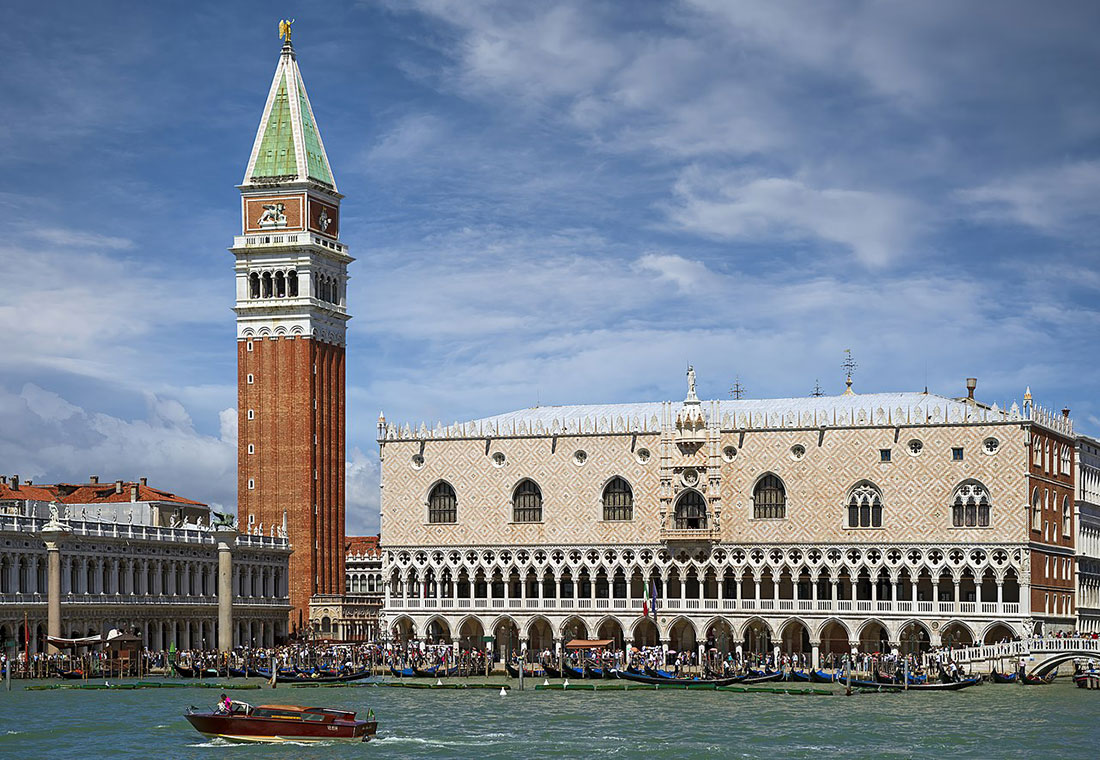
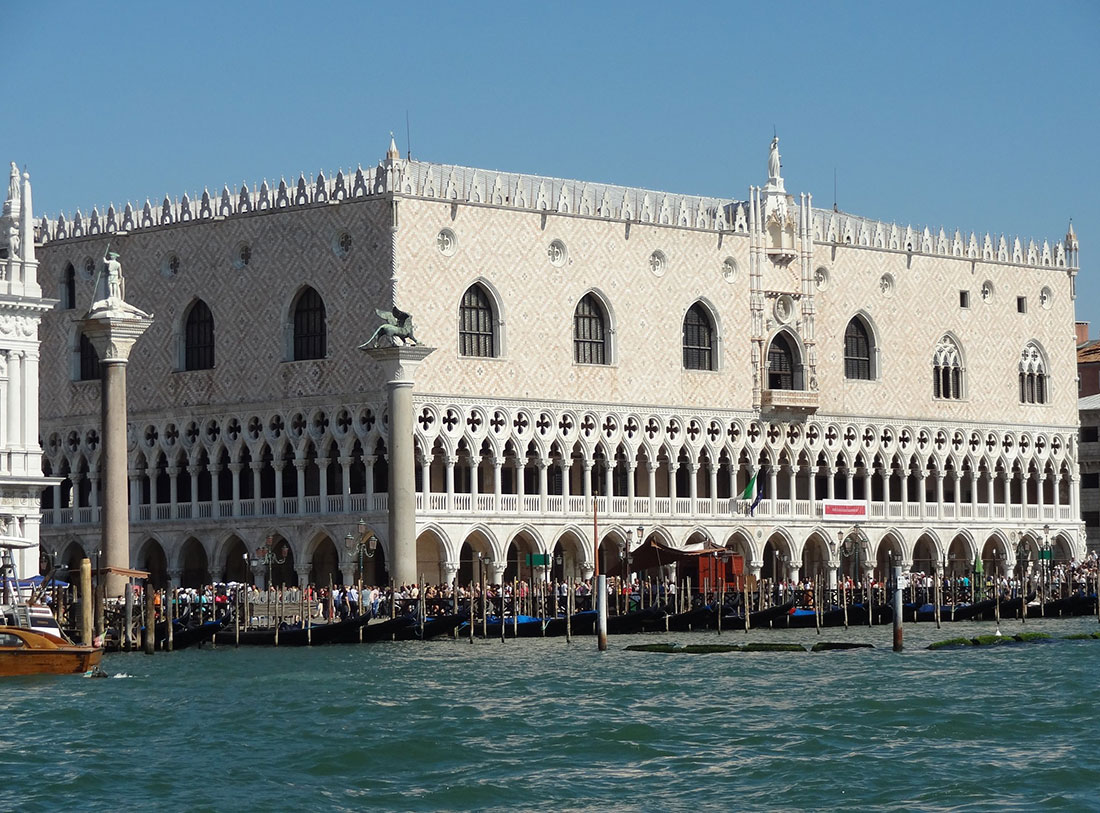
In Piazza San Marco stands a large pink building topped by a line of white towers. This is the Doge’s Palace, which for centuries served as the historical residence of the Venetian Republic. The building we see today is an iconic example of Venetian architecture
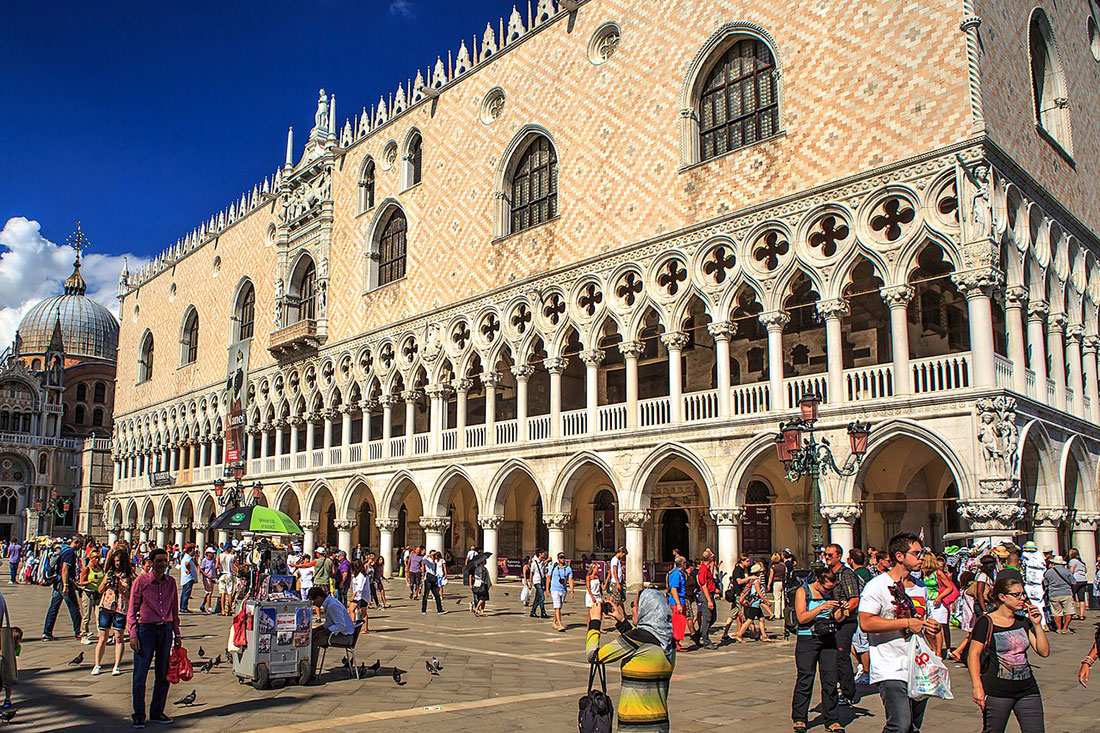
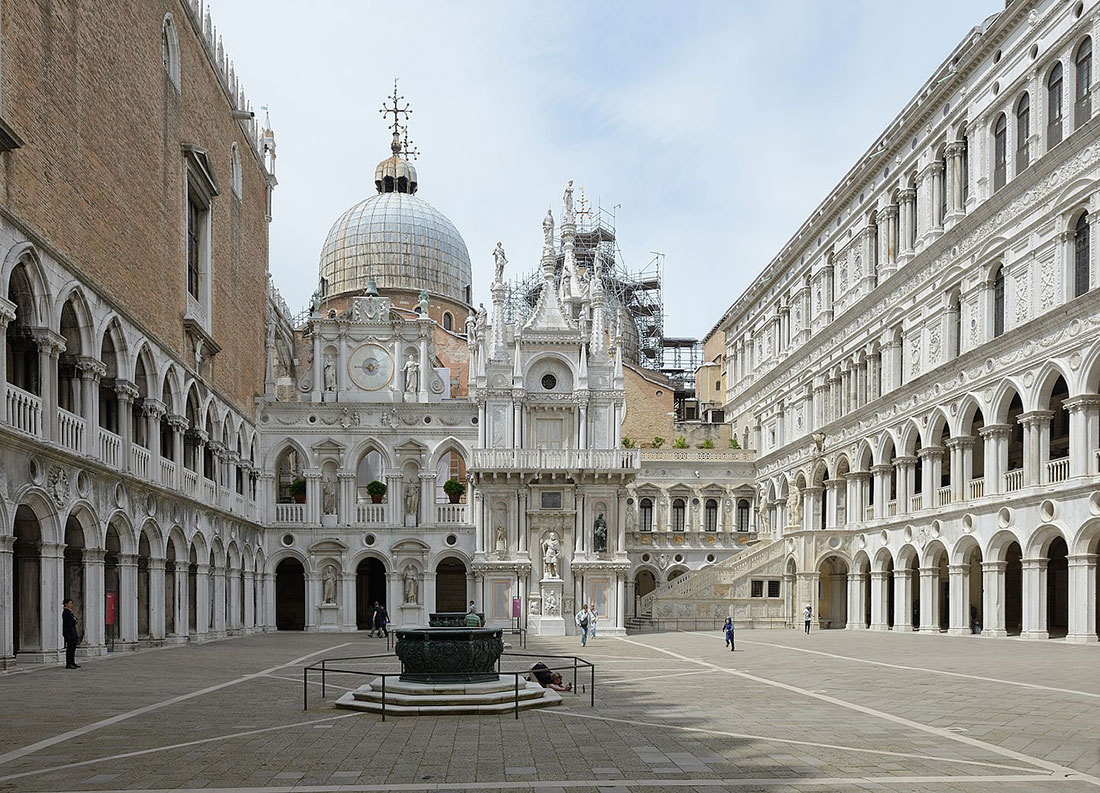
This place became the seat of government as early as 810. There was a wooden palace here, but most of it was destroyed by fire and rebuilt. And although few traces of the renovated building also remain, it is known that it was stone, similar to a fortress, with an original pattern on the outer wall. In the 12th and 13th centuries, Venice became a bustling center of trade and built its empire on land and sea. All this meant the arrival of huge wealth in the city and the expansion of government, which entailed the need for a new palace.
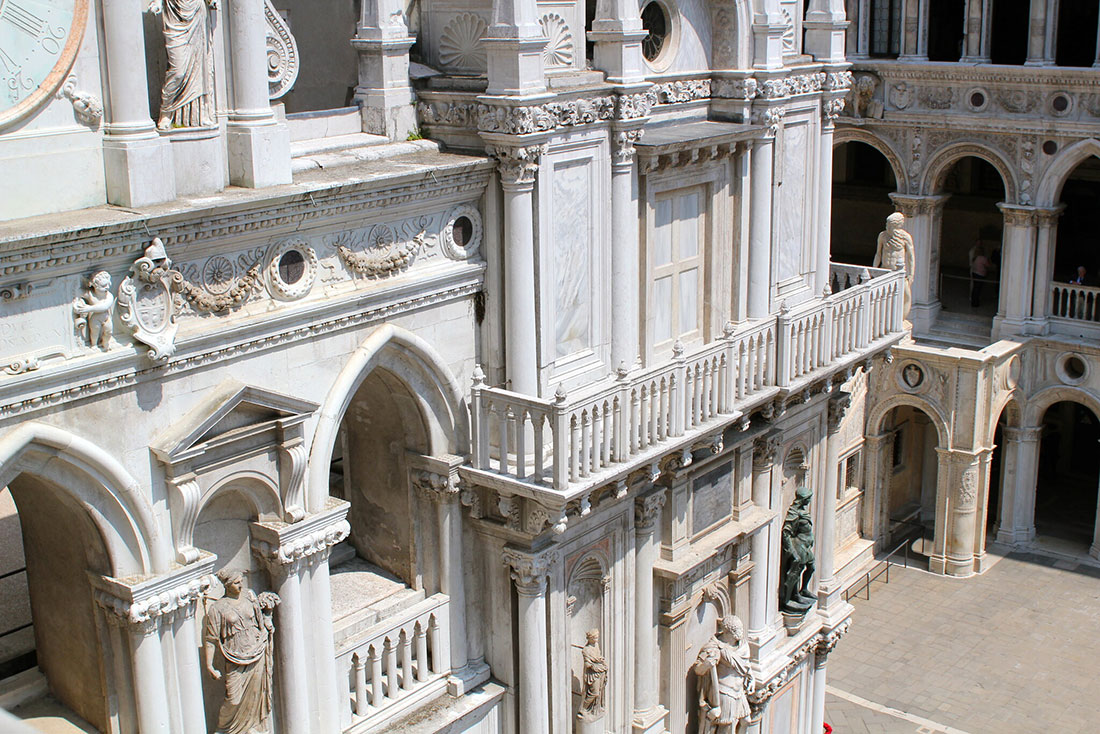
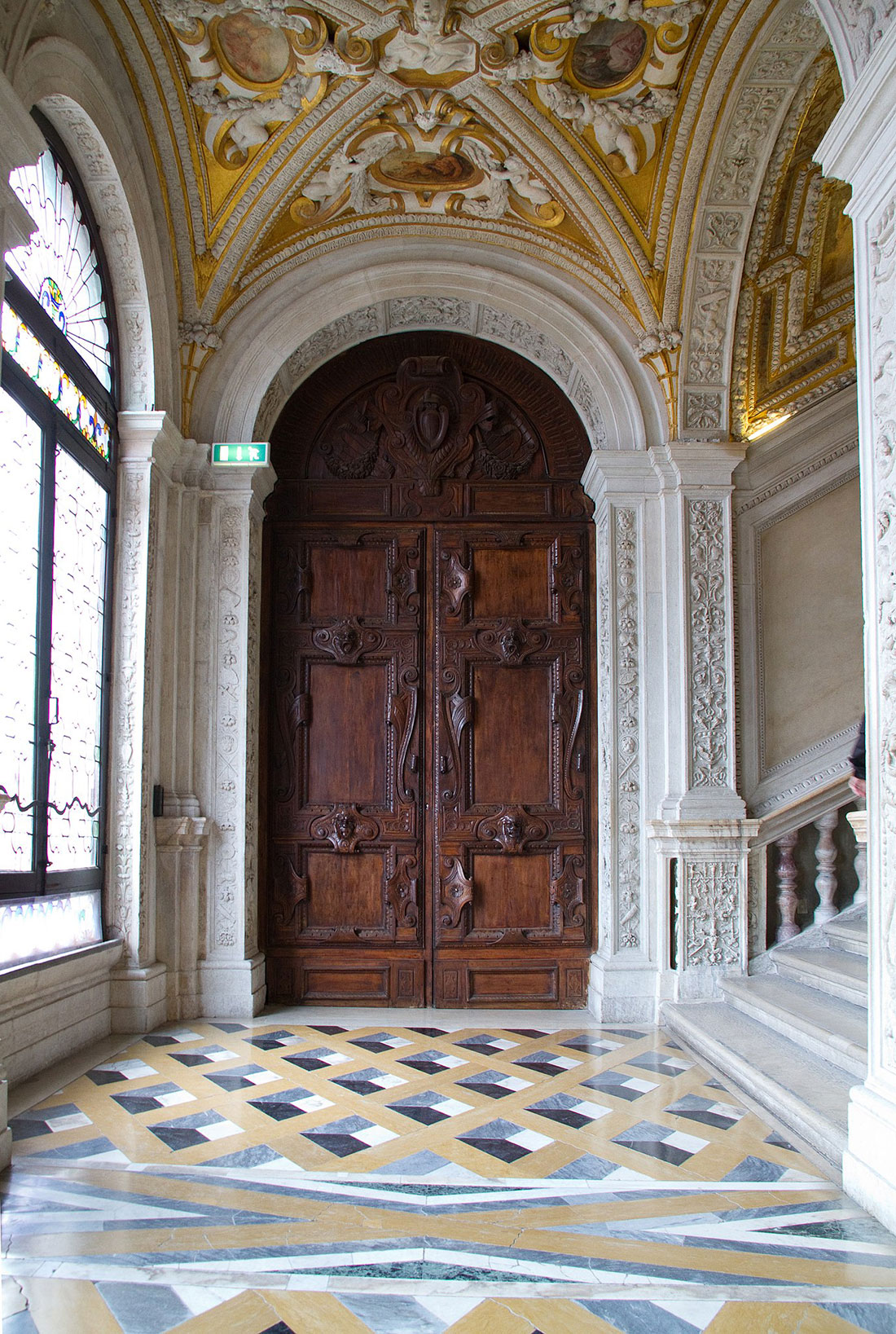
The construction of the palace we see today was started around 1340 during the reign of Doge Bartolomeo Gradenigo (1339-1343) and concerned mainly the lagoon side of the palace. In 1365, the Paduan painter Guariento was commissioned to decorate the east wall of the Great Council Hall with an original fresco, and the balcony in it is the artwork of Dalle Masegne brothers. The Grand Council first met in this hall in 1419.
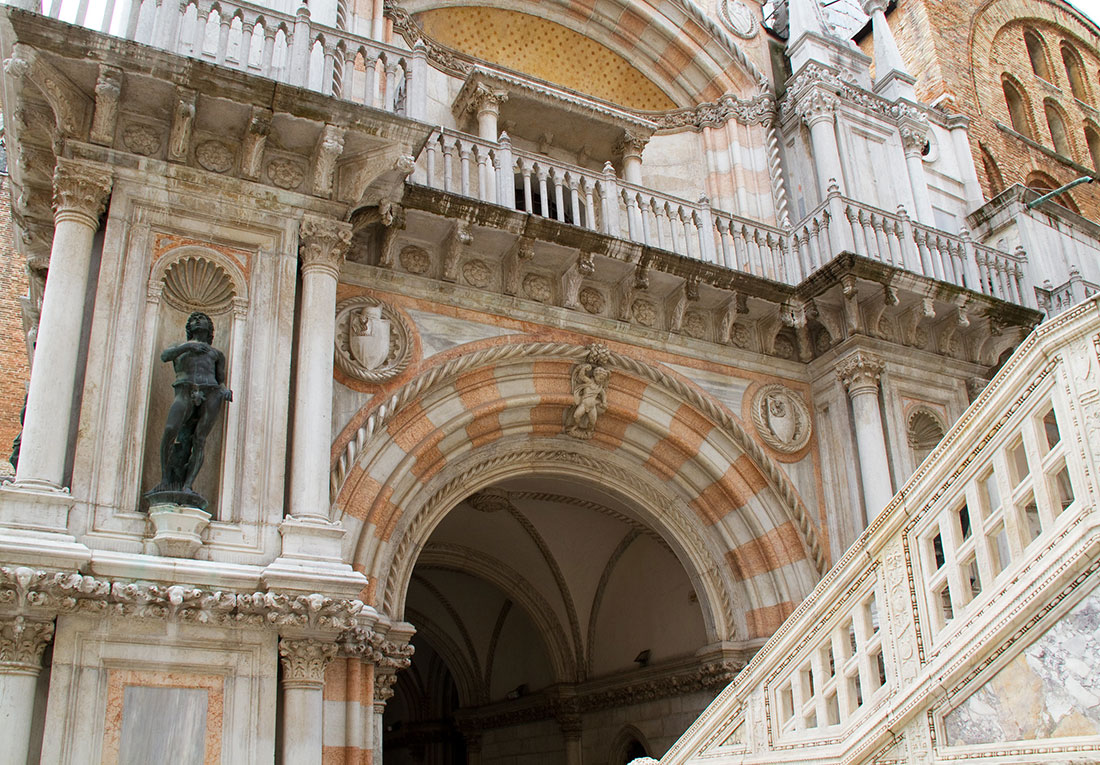
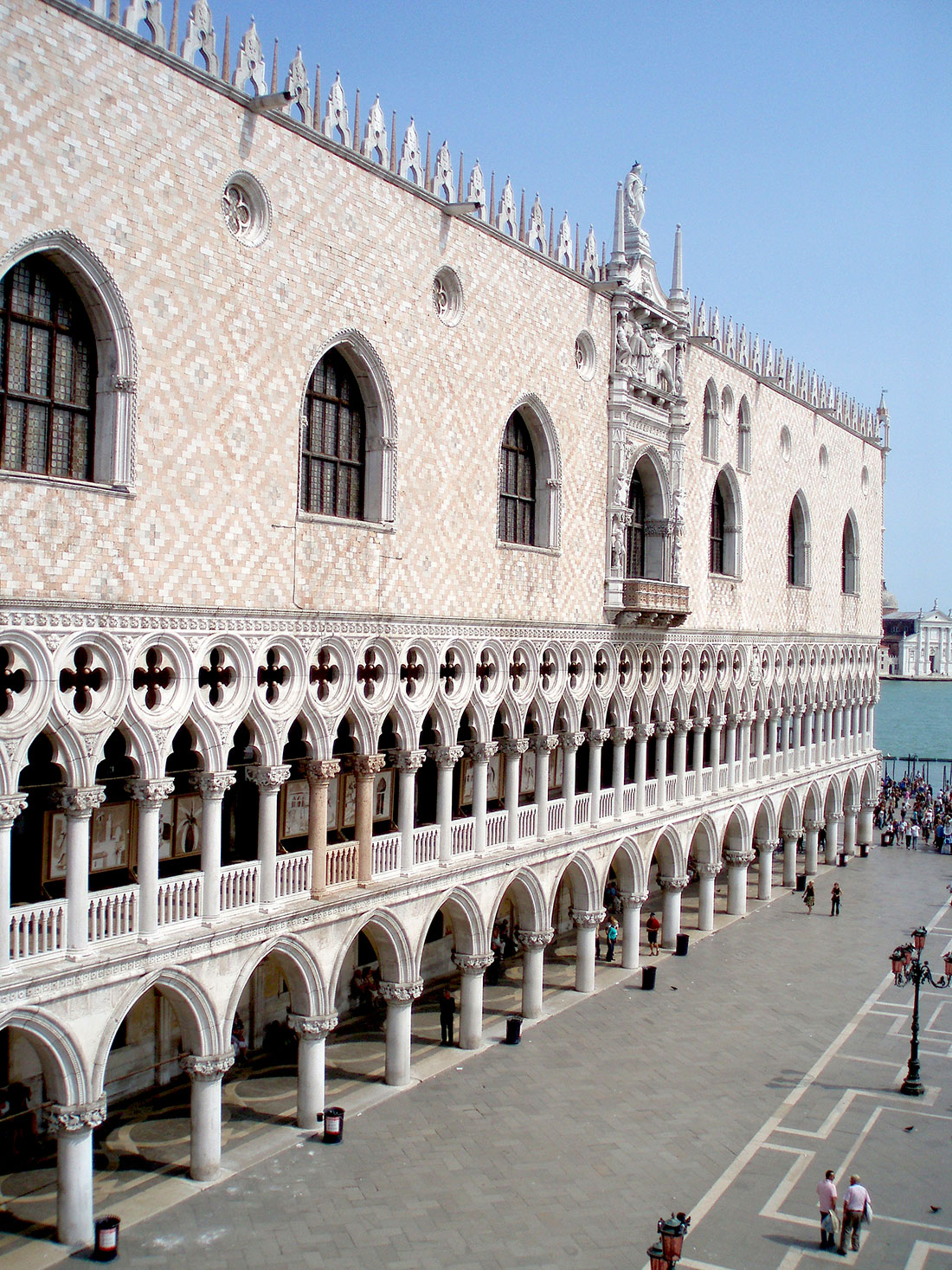
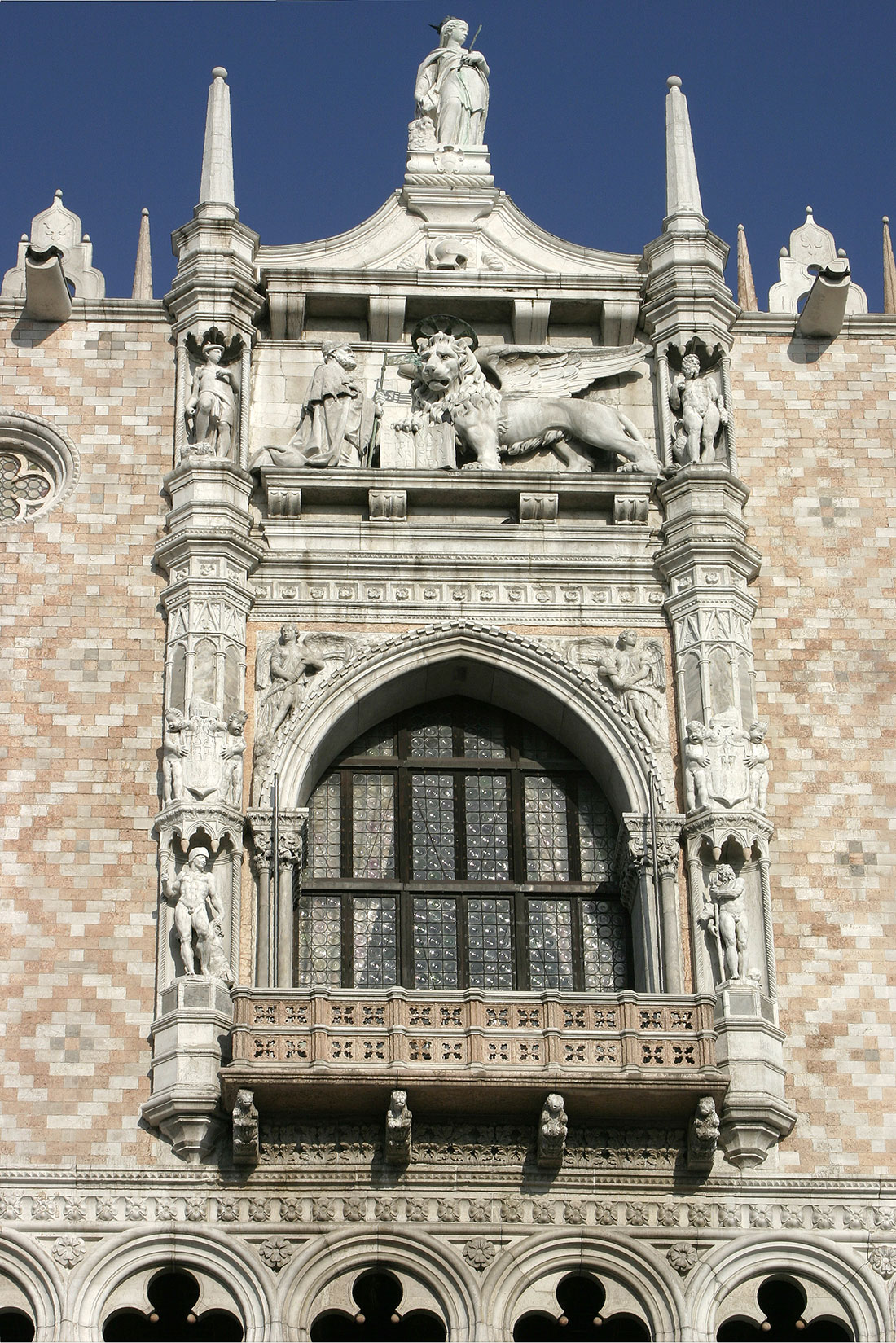
In 1424, the construction of this palace in the Venetian Gothic style was completed. In the course of the work, the facades overlooking the Molo embankment and Piazza San Marco were also expanded.
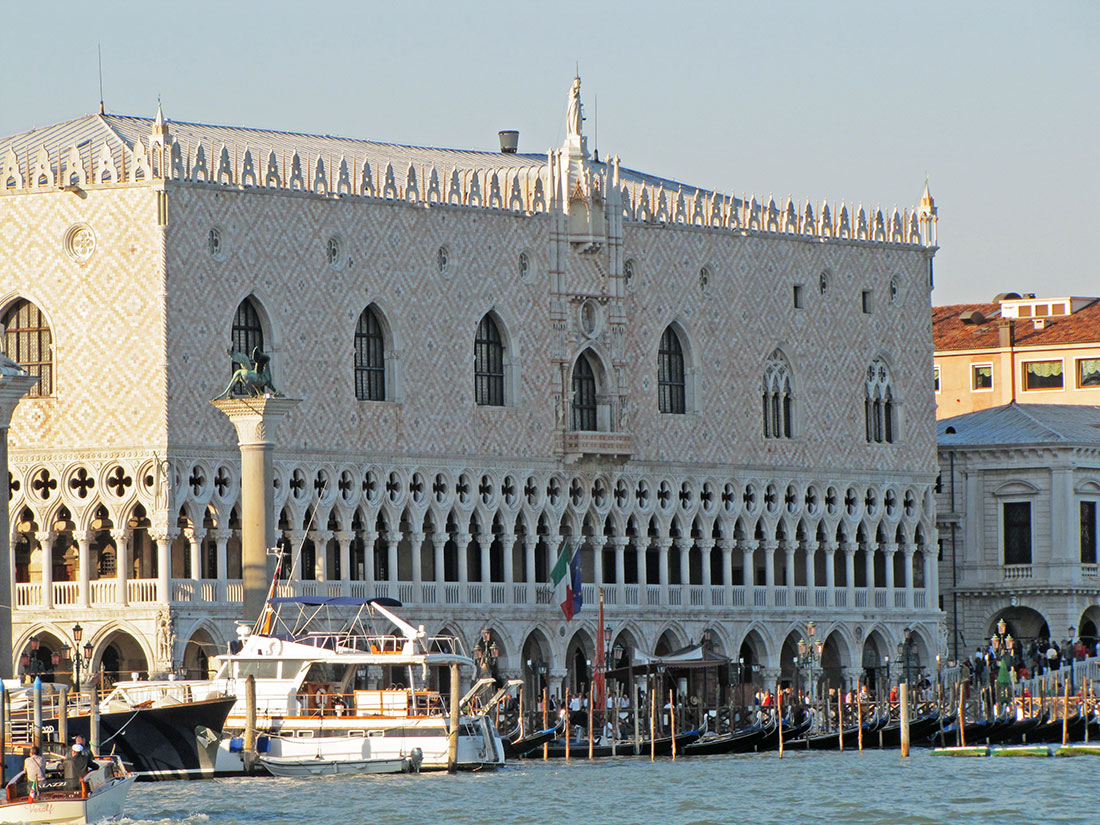
The Porta della Carta, the main gate of the Doge’s Palace, was designed by Giovanni and Bartolomeo Bon (Buon). Its construction was started in 1438
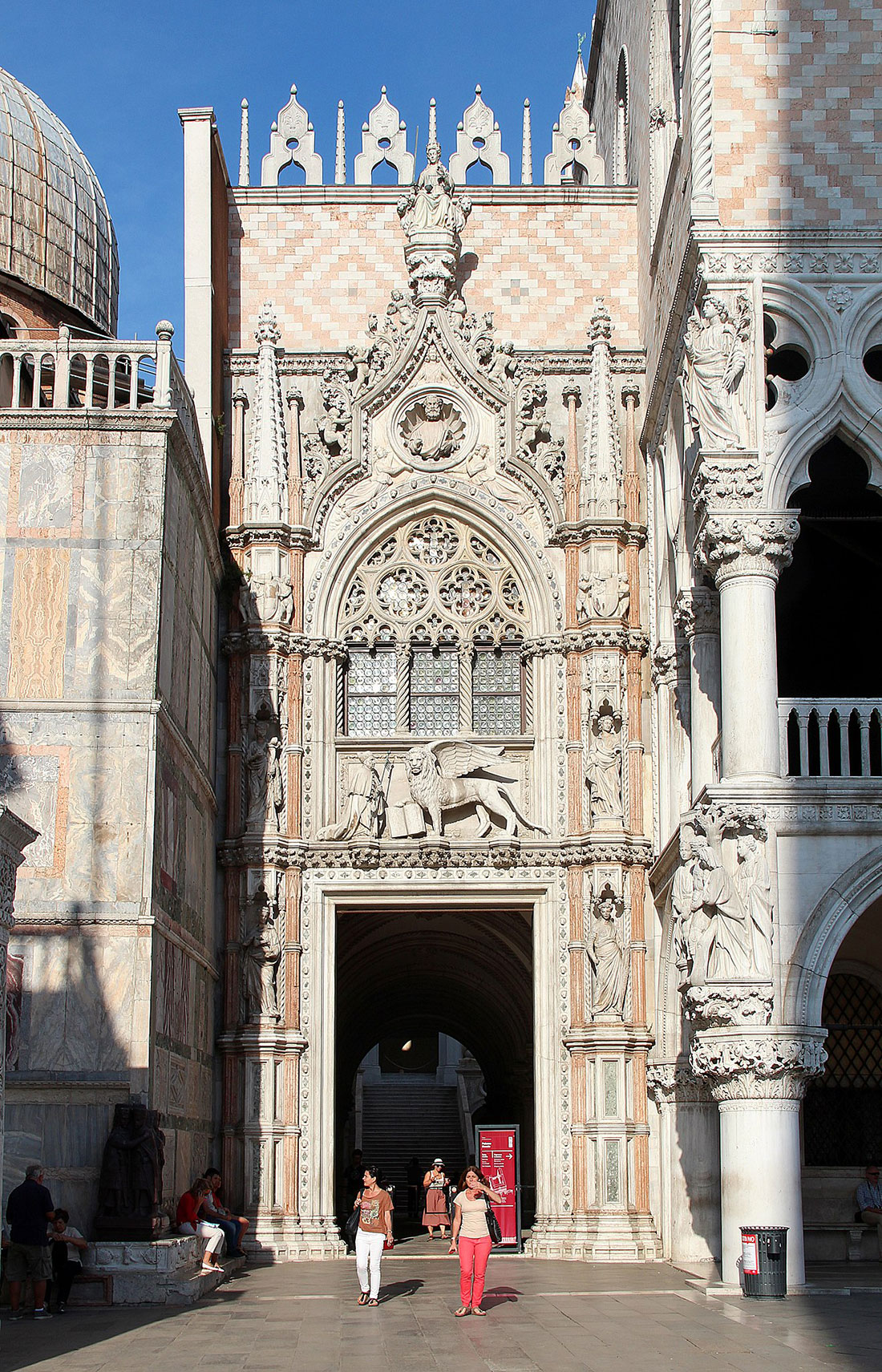

In 1483, a strong fire broke out in the Palace from the side of the canal, where the Doge’s apartments were located. Once again, a major renovation was needed. Antonio Rizzo was hired to carry out the work. He was expected to give the building a new architectural look of the Renaissance. So along the canal, from Ponte della Canonica to Ponte della Paglia, a completely new structure appeared. The work was completed by 1510, and by that time the architect Pietro Lombardo had taken the place of Rizzo. The former updated the decoration of the facade and erected the Staircase of the Giants in the courtyard of the palace.
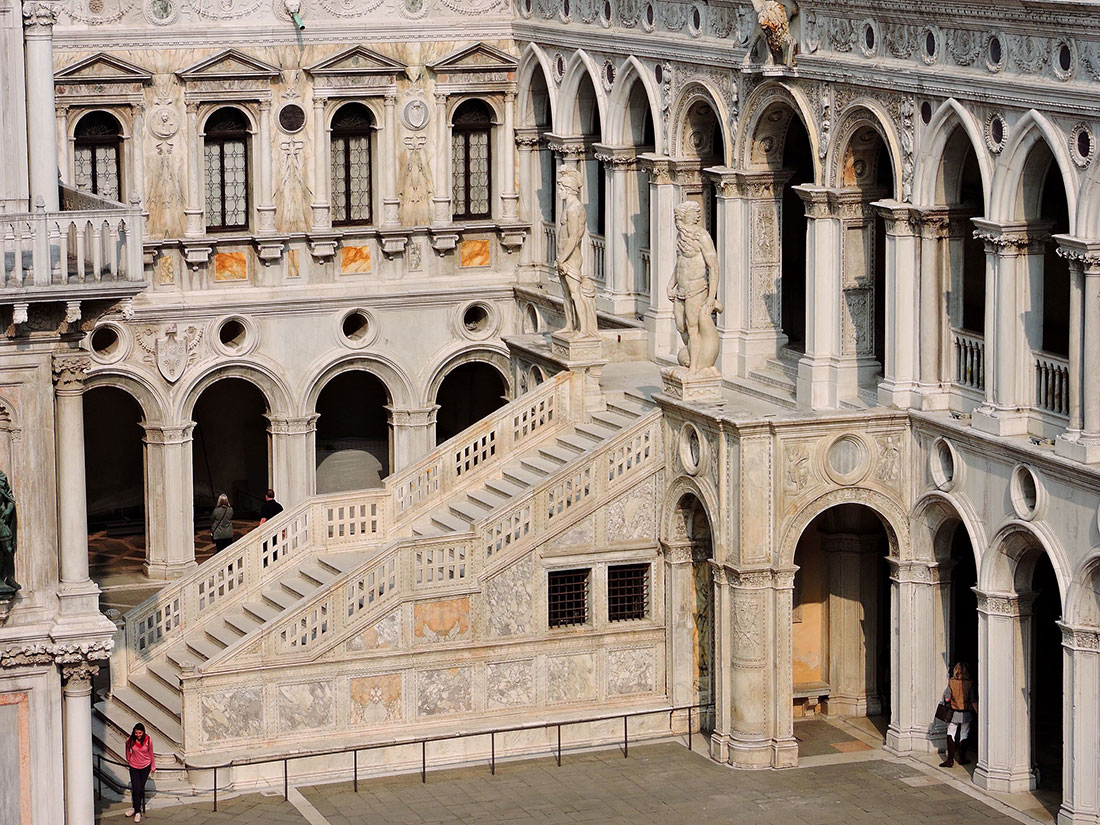
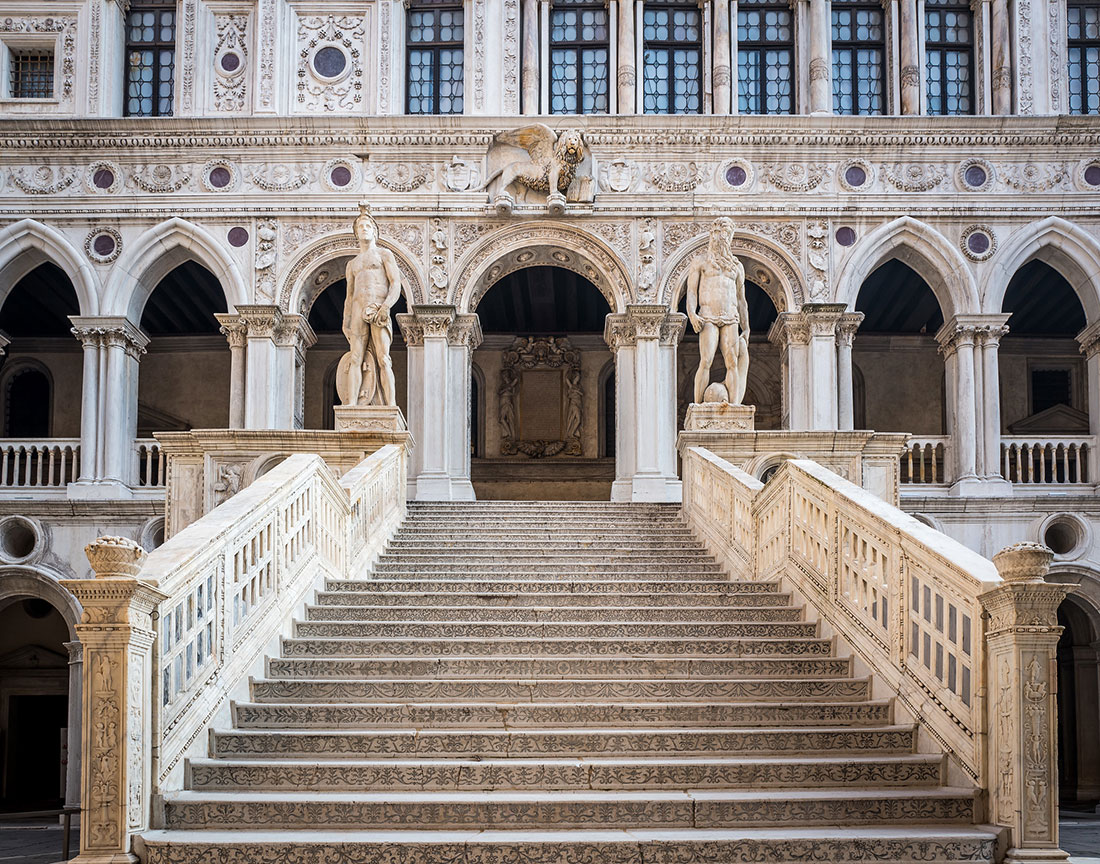
The interior of the Doge’s Palace is opulent and splendid, marked by a sumptuous combination of ornate furniture and wall paintings by the greatest masters of Venetian art. The palace includes the Doge’s private apartments, offices and judicial chambers. Here the Senate debated financial matters, and the criminal courts delivered sentences.
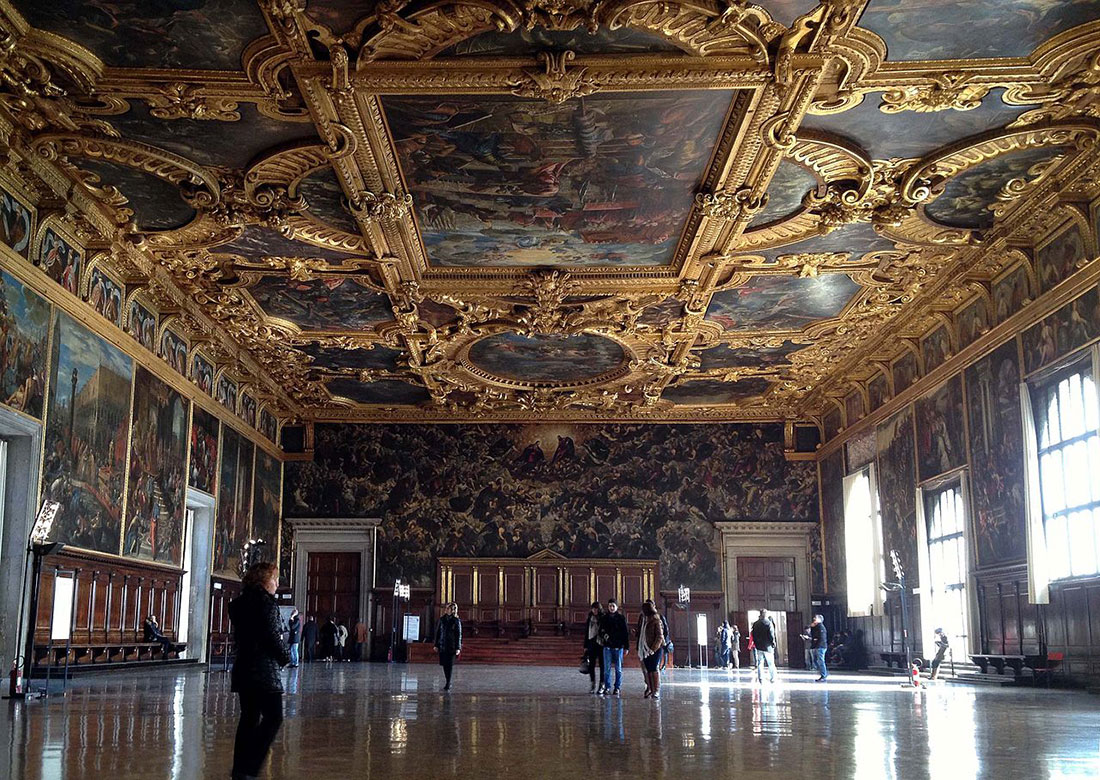
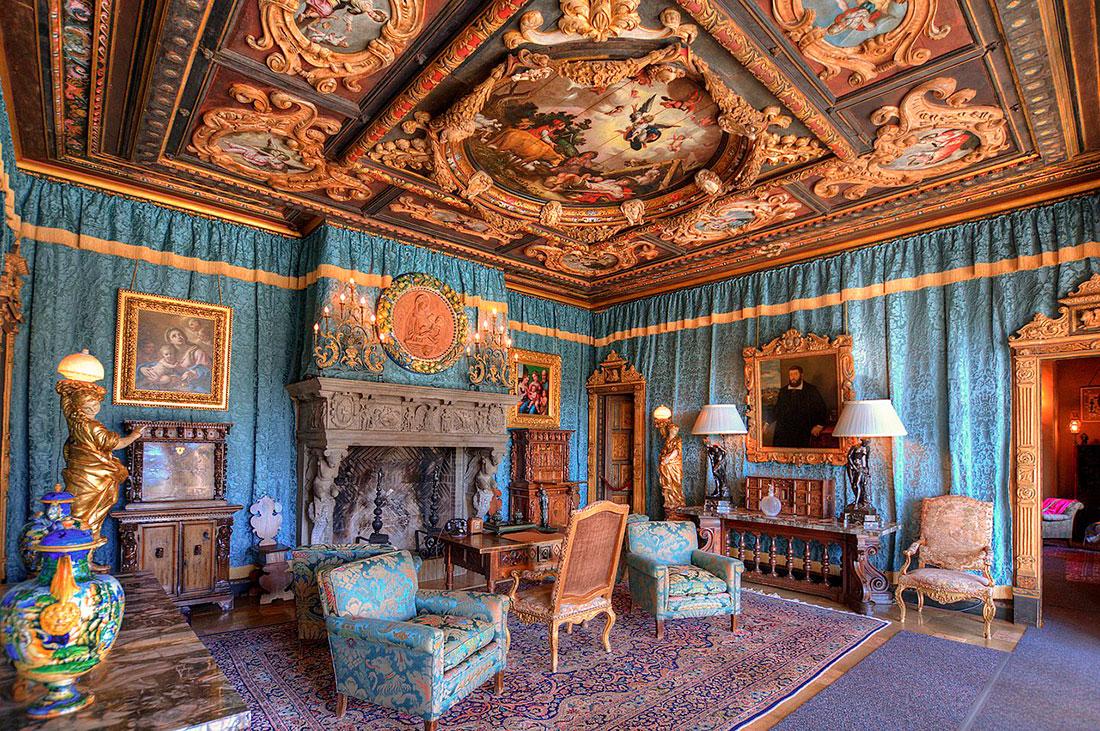
Today, you can take a self-guided tour of the Doge’s Palace with an audio guide, or take a pre-booked 75-minute secret route that includes a visit to the infamous Giacomo Casanova’s prison cell and other parts of the building only accessible on this tour. A wealth of history and architecture, including the Bridge of Sighs and the Scala d’Oro, make the Doge’s Palace a breathtaking tourist attraction in Venice.
